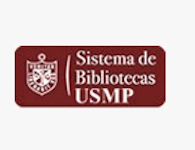Peruvian horse sickness virus and Yunnan orbivirus, isolated from vertebrates and mosquitoes in Peru and Australia

View/Open
Trabajo
(application/pdf: 586.2Kb)
(application/pdf: 586.2Kb)
Date
2009-11-25Author(s)
Attoui, Houssam
Mendez-Lopez, Maria Rosario
Rao, Shujing
Hurtado-Alendes, Ana
Lizaraso-Caparo, Frank
Mohd Jaafar, Fauziah
Samuel, Alan R.
Belhouchet, Mourad
Pritchard, Lindsay I.
Melville, Lorna
Weir, Richard P.
Hyatt, Alex D.
Davis, Steven S.
Lunt, Ross
Calisher, Charles H.
Tesh, Robert B.
Fujita, Ricardo
Mertens, Peter P. C.
Metadata
Show full item recordAbstract
During 1997, two new viruses were isolated from outbreaks of disease that occurred in horses, donkeys, cattle and sheep in Peru. Genome characterization showed that the virus isolated from horses (with neurological disorders, 78% fatality) belongs to a new species the Peruvian horse sickness virus (PHSV), within the genus Orbivirus, family Reoviridae. This represents the first isolation of PHSV, which was subsequently also isolated during 1999, from diseased horses in the Northern Territory of Australia (Elsey virus, ELSV). Serological and molecular studies showed that PHSV and ELSV are very similar in the serotype-determining protein (99%, same serotype). The second virus (Rioja virus, RIOV) was associated with neurological signs in donkeys, cattle, sheep and dogs and was shown to be a member of the species Yunnan orbivirus (YUOV). RIOV and YUOV are also almost identical (97% amino acid identity) in the serotype-determining protein. YUOV was originally isolated from mosquitoes in China.
Collections
- Artículos [274]
Publisher
Elsevier B.V.
Rights
info:eu-repo/semantics/openAccess
Funding
"Reo ID" de la subvención de la UE QLK2-2000-00143







